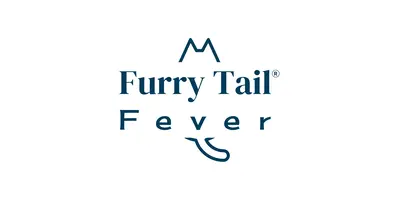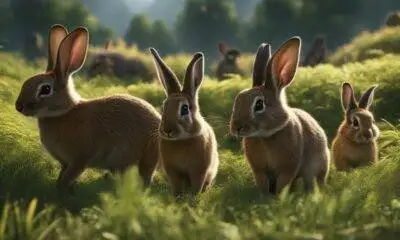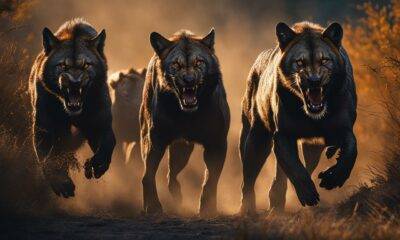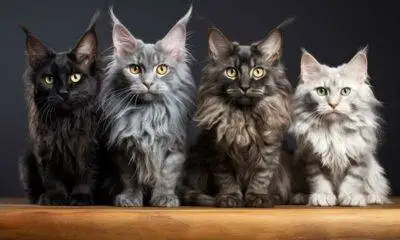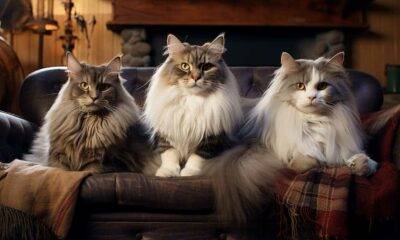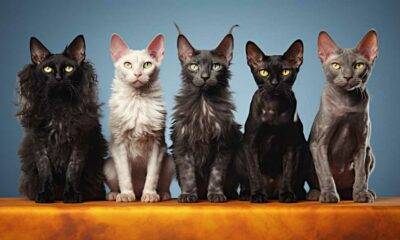Cat Breeds
8 Best Endangered Wild Cat Species

8 Best Endangered Wild Cat Species
Are you passionate about wildlife and committed to protecting endangered species?
Take a closer look at the world of wild cats and explore the top 8 endangered species that urgently need our attention.
From the elusive Iberian Lynx to the majestic Sumatran Tiger, these remarkable creatures are at risk of disappearing forever.
By learning about these incredible animals, we can raise awareness and support conservation efforts.
Join us in the mission to preserve the remarkable beauty and biodiversity of our planet’s wild cat species.
Key Takeaways
Here is a list of some of the most endangered wild cat species in the world. These incredible animals are facing serious threats to their survival. However, through conservation efforts, there is hope for their future.
It is crucial that we continue to support and protect these species, as they play a vital role in maintaining the balance of their ecosystems.
Let’s take action and raise awareness about the challenges these beautiful animals are facing before it’s too late. The time to make a difference is now.

Understanding Endangered Wild Cat Species
Understanding Endangered Wild Cat Species
When studying endangered wild cat species, it’s crucial to comprehend their habitats, behaviors, and the threats they face. By understanding conservation efforts and habitat preservation, we can help ensure the survival of these magnificent creatures.
Conservation efforts aim to protect the natural habitats of wild cat species, ensuring they have the space and resources needed to thrive. Habitat preservation also involves addressing human-wildlife conflict, which poses a significant threat to wild cat populations. As human populations expand, this conflict escalates, leading to habitat destruction and increased poaching.
Raising awareness about the threats faced by these endangered wild cat species is imperative. Human-wildlife conflict not only endangers the lives of wild cats but also poses risks to human communities. By comprehending the complexities of this conflict, conservationists and communities can collaborate to find sustainable solutions that benefit both humans and wild cats.
Additionally, supporting habitat preservation initiatives and conservation programs is vital to ensure the survival of these magnificent creatures for future generations.
The Iberian Lynx: A Rare Beauty
The Iberian Lynx, scientifically known as Lynx pardinus, is a felid species that’s native to the Iberian Peninsula in southwestern Europe. This elusive creature, with its distinctive spotted coat and tufted ears, primarily resides in the Mediterranean scrubland and forested areas of Spain and Portugal. Let’s take a closer look at the different types of habitats where the Iberian Lynx can be found:
- Mediterranean Scrubland: Located in southern Spain, this habitat is characterized by dense shrubs, open woodland, and grassy areas. It provides an ideal environment for the lynx to hunt and roam.
- Forested Areas: Found in western Portugal, these habitats consist of oak and cork forests that are home to a diverse range of wildlife. The lynx thrives in this rich and vibrant ecosystem.
- Riparian Habitats: Situated in the Guadiana Valley in Spain, these habitats are located near water sources and are characterized by riverine woodlands and grasslands. They provide essential resources and shelter for the lynx.
Conservation efforts are of utmost importance for the survival of this endangered species. Various projects are underway to restore and protect the lynx’s habitats, ensuring that they have suitable environments to thrive in. It’s also crucial to address conflicts between humans and wildlife and to understand the ecological impact of these magnificent creatures.
By supporting these endeavors, we can contribute to the preservation of this rare and beautiful species.
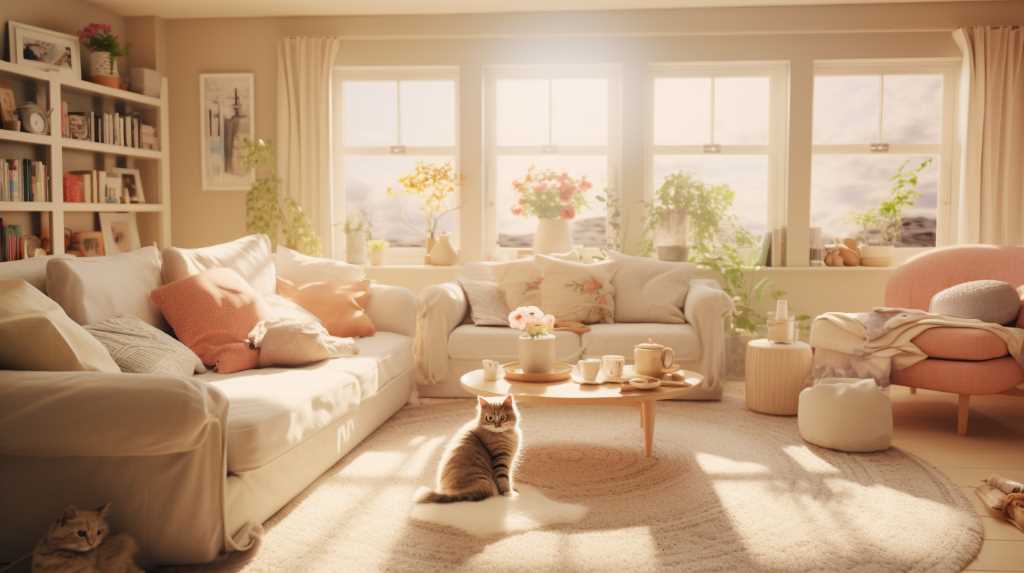
Quote: ‘The Iberian Lynx isn’t just a symbol of biodiversity, but also a testament to our commitment to protecting our natural heritage.’ – [Your Name]
The Amur Leopard: A Striking Predator
The survival of the Amur Leopard, a magnificent predator, relies heavily on the conservation of its habitat. Similar to the Iberian Lynx, this leopard depends on the dense forests of the Russian Far East for camouflage and protection from prey and potential threats. Unfortunately, human activities such as logging, infrastructure development, and poaching have encroached on its habitat, pushing the species to the edge of extinction.
Urgency of Conservation Efforts
Preserving Habitat: It’s vital to protect the remaining forests and establish protected areas to ensure the survival of the Amur Leopard.
Combating Poaching: Strict enforcement of laws and increased patrols are essential to tackle the illegal hunting and trade of Amur Leopards.
Raising Awareness: Educating local communities and the global population about the challenges faced by this elusive predator can garner support for conservation initiatives.
The elusive behavior of the Amur Leopard makes studying and protecting it a challenging task. However, with immediate action and collective dedication, there’s hope for the survival of this remarkable predator. Your support and involvement in conservation efforts can make a significant difference in securing a future for the Amur Leopard.
The Sumatran Tiger: A Majestic Creature
Preserving the habitat of the Sumatran Tiger is crucial for its survival amidst increasing threats. Efforts to conserve the Sumatran tiger are essential to address the challenges posed by human-wildlife conflict and poaching. The preservation of their habitat is vital to ensure the continued existence of this majestic creature. Here is a table summarizing the important aspects of Sumatran tiger conservation:
| Conservation Aspect | Importance |
|---|---|
| Habitat Preservation | Crucial for the survival of the species |
| Mitigating Human-Wildlife Conflict | Essential for peaceful coexistence |
| Anti-Poaching Efforts | Vital to combat illegal hunting |
| Collaborative Initiatives | Necessary for comprehensive conservation strategies |
The Sumatran Tiger faces numerous threats, primarily due to habitat loss caused by deforestation and human encroachment. As a result, conflict between tigers and local communities has escalated. Anti-poaching efforts are critical to protect these endangered big cats from illegal hunting. Collaborative initiatives involving local communities, conservation organizations, and governments are necessary for the long-term survival of the Sumatran Tiger. Now, let’s explore the next fascinating species, the snow leopard: a ghost of the mountains.
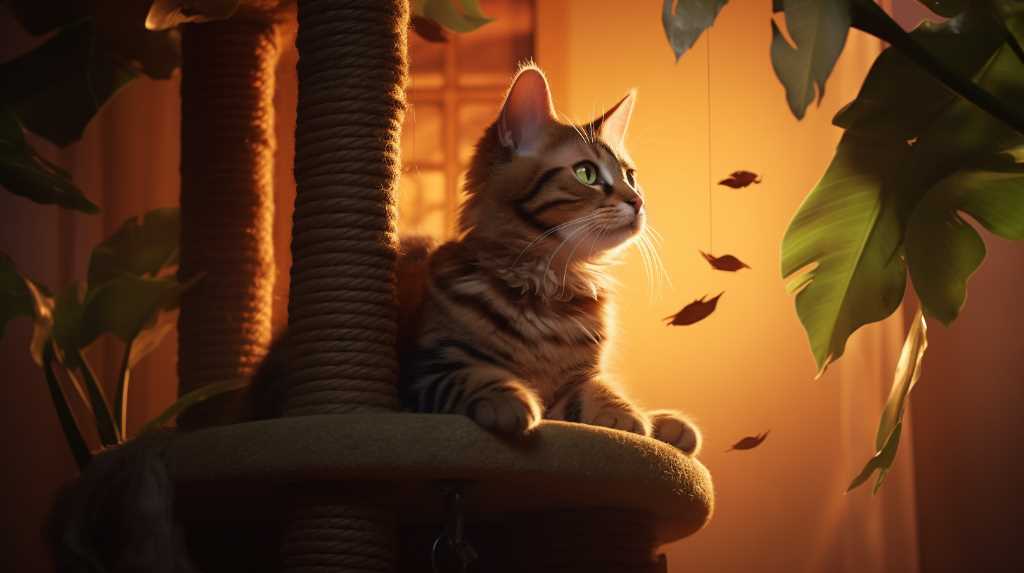
The Snow Leopard: A Mountain Ghost
Preserve the mysterious snow leopard by supporting conservation efforts in its mountain habitat. The survival of the snow leopard depends on its habitat, making it crucial to take action.
Here’s how you can make a difference:
- Engage with Local Communities: Encourage and involve local communities in conservation efforts to promote coexistence between humans and snow leopards. By working together, we can reduce conflicts and protect the snow leopard population.
- Support Sustainable Livelihoods: Help initiatives that provide sustainable livelihood options for communities living in snow leopard habitats. By offering alternative sources of income, we can reduce the reliance on natural resources and minimize the impact on the snow leopard’s habitat.
- Combat Poaching: Advocate for stronger anti-poaching laws and enforcement to fight against illegal hunting and trade of snow leopards and their prey. Addressing poaching is crucial to stabilize the snow leopard population and preserve the delicate balance of its mountain ecosystem.
The snow leopard population is at risk, but with dedicated conservation efforts, we can ensure the survival of this elusive species. Your support can have a profound impact on the future of the snow leopard.
The Asiatic Cheetah: A Swift Runner
Support the efforts to protect the habitat and population of the Asiatic Cheetah in order to ensure its survival. It is essential to prioritize conservation measures for this endangered species as it faces severe threats. Human interference, such as habitat destruction and poaching, has resulted in a significant decline in the cheetah population. To understand the importance of conservation efforts, let’s consider the impact of various initiatives in the table below:
| Conservation Efforts | Impact on Asiatic Cheetah |
|---|---|
| Habitat Protection | Ensures suitable living space |
| Anti-Poaching Measures | Safeguards against illegal hunting |
| Community Engagement | Promotes coexistence with humans |
| Genetic Diversity | Preserves long-term viability |
The survival of the Asiatic Cheetah depends on protecting its natural habitat and implementing effective anti-poaching measures. With the expansion of human populations, it becomes increasingly urgent to establish sustainable coexistence. Additionally, preserving genetic diversity is crucial for the long-term viability of the species. Your support in these conservation efforts plays a vital role in ensuring the continued existence of the Asiatic Cheetah in the wild.
Similar challenges are faced by the Javan Leopard, another species threatened by habitat loss and human encroachment. This emphasizes the urgent need for action to protect these magnificent creatures.
The Javan Leopard: A Silent Hunter
The Javan Leopard is a captivating and endangered wild cat species found on the Indonesian island of Java. It possesses remarkable grace and agility, allowing it to navigate dense forests and grasslands with astonishing silence. Unfortunately, the Javan Leopard’s existence is under threat due to habitat destruction and illegal poaching.
To ensure its survival, it’s crucial to understand the following aspects:
- Preserving Habitat: The survival of the Javan Leopard is closely tied to the preservation of its natural habitat. Deforestation and human encroachment have significantly reduced its living space, making habitat preservation essential for its continued existence.
- Conservation Measures: Various efforts are underway to protect the Javan Leopard. These include the establishment of protected areas, anti-poaching initiatives, and raising awareness about the species’ plight. These actions play a vital role in safeguarding the future of this remarkable feline.
Immediate action is needed to secure the Javan Leopard’s place in the wild for future generations. Your support for conservation efforts and habitat preservation is crucial in ensuring a bright future for this magnificent creature.

[QUOTE]: ‘The Javan Leopard is a symbol of the delicate balance between humans and nature. By protecting its habitat, we aren’t just saving a species, but also preserving the biodiversity of our planet.’ – [Your Name]
The Far Eastern Wildcat: A Forgotten Species
The Far Eastern Wildcat, also known as the Amur leopard cat, is often overlooked when discussing endangered wild cat species. However, this species is in urgent need of attention.
The Far Eastern Wildcat is native to the Russian Far East, northeastern China, and the Korean Peninsula, but it faces significant threats from habitat loss and fragmentation caused by human activities and climate change. If we don’t act immediately, this species could disappear forever.
Preserving the habitat is crucial for the survival of the Far Eastern Wildcat. Human settlements, agriculture, and development have encroached on their natural habitats, leading to a rapid decline in their population. To ensure their well-being, it’s essential that governments, conservation organizations, and local communities work together to establish protected areas and corridors that allow the Far Eastern Wildcat to roam and breed safely.
We need to shift the conversation and bring attention to the challenges faced by the Far Eastern Wildcat. Through collective efforts and a renewed focus on conservation, we can ensure the survival of this forgotten species.
Frequently Asked Questions
How Do Conservation Efforts for Endangered Wild Cat Species Differ From One Region to Another?
Conservation strategies for endangered wild cat species differ across regions due to unique challenges. In Asia, the focus is on safeguarding habitats from human encroachment, while in Africa, the emphasis is on combating poaching activities. Adapting approaches to address specific threats is of utmost importance.
What Are the Biggest Threats to the Survival of These Endangered Wild Cat Species?
The survival of endangered wild cat species is threatened by human-wildlife conflict and habitat loss. These challenges require immediate action to protect these magnificent creatures and ensure their ongoing existence.
Are There Any Success Stories of Endangered Wild Cat Species Making a Comeback in the Wild?
There have been several remarkable success stories of endangered wild cat species making a comeback in the wild thanks to effective conservation strategies. Through dedicated efforts, populations of species such as the Iberian lynx and Amur leopard have shown promising recoveries. These conservation initiatives have played a crucial role in preserving these majestic creatures and their habitats. By implementing targeted measures and raising awareness, we can continue to support the recovery of endangered wild cat species and ensure their survival for future generations. As Jane Goodall once said, "Only if we understand can we care. Only if we care will we help. Only if we help shall all be saved."
How Do Local Communities in the Habitats of These Endangered Wild Cat Species Contribute to Their Conservation?
The participation of local communities is crucial for the conservation of endangered wild cat species. These communities play a vital role by engaging in activities such as education, protecting habitats, and combating poaching. Their involvement is essential for fostering a sustainable coexistence between humans and these majestic creatures, which is necessary for their survival. By empowering local communities, we can ensure the long-term conservation of these endangered wild cats.
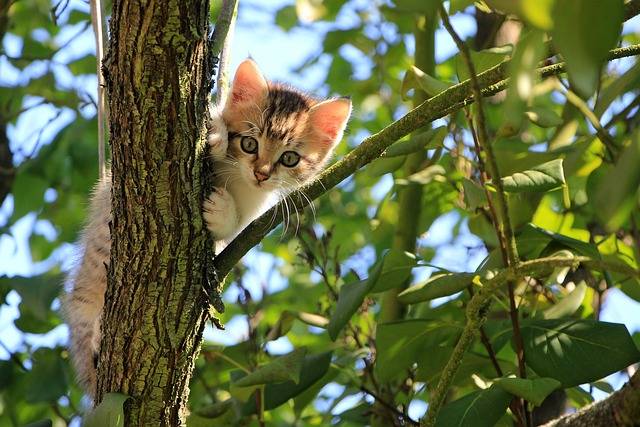
What Role Do Zoos and Wildlife Sanctuaries Play in the Preservation of Endangered Wild Cat Species?
Zoos and wildlife sanctuaries play a vital role in the preservation of endangered wild cat species. They achieve this through captive breeding programs, conservation education, and the maintenance of genetic diversity. These efforts are crucial for the survival of these majestic animals. By providing a safe and controlled environment, zoos and wildlife sanctuaries can help increase the population of endangered wild cats and prevent their extinction. Additionally, they educate the public about the importance of conservation and the threats faced by these species in the wild. Through these educational programs, they inspire people to take action and contribute to the protection of these magnificent creatures.
Conclusion
You have now gained knowledge about some of the most endangered wild cat species in the world. These magnificent creatures are facing threats to their survival, but with conservation efforts, there’s hope for their future.
It’s extremely important that we continue to support and protect these species, as they play a vital role in maintaining the balance of their ecosystems.
Let’s take action and raise awareness about the challenges these beautiful animals are facing before it’s too late. The time to make a difference is now.

Cat Breeds
What Are Some Rare Domestic Cat Breeds?
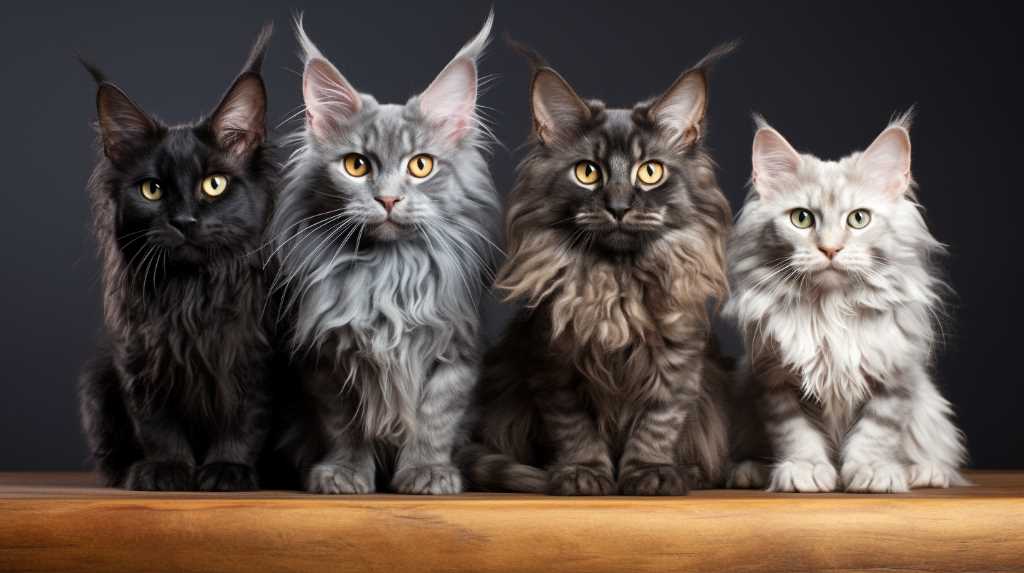
What Are Some Rare Domestic Cat Breeds?
Did you know that the world of domestic cats is incredibly diverse? There are some lesser-known cat breeds that are like hidden gems just waiting to be discovered.
Take, for example, the elegant Peterbald, a hairless wonder, or the adventurous Kurilian Bobtail, a wild hunter. These rare cat breeds offer a unique charm and companionship that you won’t find in more common breeds.
If you’re interested in exploring the fascinating world of rare cat breeds, get ready for an exciting journey! From the miniature cheetah-like Serengeti to the desert lynx-like Caracal, there are so many interesting and beautiful feline companions out there.
So why not discover a rare cat breed and add a touch of uniqueness to your home?
Key Takeaways
Now that you have learned about these rare domestic cat breeds, you may be feeling excited and eager to bring one into your home. These cats are truly special and have intriguing backgrounds that set them apart from other breeds.
Instead of opting for a typical cat, why not choose something extraordinary? Take this opportunity to find the perfect addition to your family and experience the companionship and joy they will bring into your life.
Peterbald: The Hairless Wonder
When it comes to rare domestic cat breeds, the Peterbald stands out as a truly unique feline. This breed originated in Russia in the mid-1990s through experimental breeding involving a Donskoy (Don Sphynx) and an Oriental Shorthair. What sets the Peterbald apart is its distinctive hairless or short coat, making it quite different from other domestic cats. However, it’s important to note that their lack of fur requires special care. Regular bathing is necessary to prevent oil buildup on their skin, and they also need protection from direct sunlight as they’re more prone to sunburn. Grooming plays a crucial role in their overall health and comfort, with a focus on keeping their ears and skin clean and moisturized.

As we transition to the next section about the ‘Kurilian Bobtail: The Wild Hunter,’ it’s worth mentioning that while the Peterbald requires specific grooming and care, the Kurilian Bobtail has its own unique needs and characteristics.
Kurilian Bobtail: The Wild Hunter
The Kurilian Bobtail is a rare domestic cat breed that originates from the Russian Far East. It’s known for its distinctive pom-pom tail and strong hunting instincts.
These cats are excellent hunters due to their agility, quickness, and keen sense of smell. Their physical features, such as their sturdy build, powerful hind legs, and bobbed tail, provide them with balance and agility during hunting.
The Kurilian Bobtail has a wild and untamed appearance, complemented by its striking eyes, which gives it the aura of a skilled predator. Their semi-long to long fur, often with a thick undercoat, helps protect them from the elements and allows them to thrive in different environments. Additionally, their distinct coat patterns and colors aid in their ability to blend into their surroundings, making them even more effective hunters.
If you’re seeking a feline companion with a strong natural instinct for hunting, the Kurilian Bobtail may be the perfect match for you.
Serengeti: The Miniature Cheetah
The Serengeti is a unique domestic cat breed that resembles a miniature cheetah. With their sleek and athletic build, they capture the grace and agility of their wild counterparts. If you’re in search of a feline companion that embodies the qualities of a wild predator, the Serengeti might be the perfect choice for you.
Known for their affectionate, playful, and energetic personality, Serengeti cats make wonderful companions for families or individuals seeking an active pet. When it comes to grooming, their short coat only requires occasional brushing to keep it healthy and sleek.
In addition to their personality, Serengeti cats are of moderate size and have strong exercise needs. They’re highly active and enjoy interactive play, so providing them with toys and engaging in play sessions is essential to meet their exercise requirements. Their athletic build contributes to their agility, making interactive playtime even more enjoyable for them.
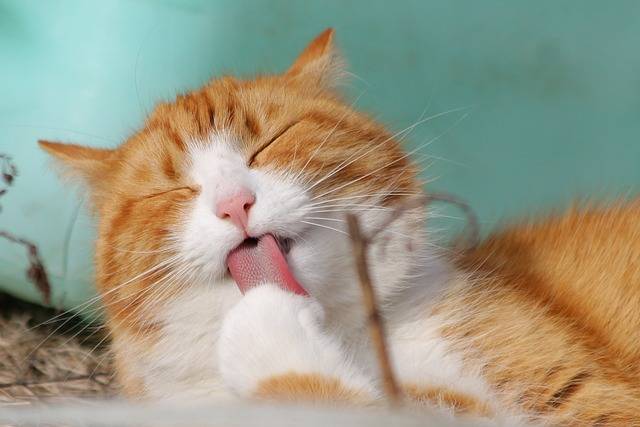
Caracal: The Desert Lynx
If you’re interested in a rare domestic cat breed that has the elegance and strength of a wild feline, the Caracal is worth considering. These cats are known for their impressive tufted ears and striking appearance. When you observe a Caracal, you’ll notice their graceful movements and powerful build, reminiscent of their larger wild relatives.
The behavior and hunting habits of Caracals reflect their agile and athletic nature, making them fascinating to watch as they stalk their prey with precision and speed. It’s crucial to protect the conservation and habitat of Caracals to ensure the survival of these magnificent cats in the wild. They’re facing threats from habitat loss and human-wildlife conflict. Efforts to safeguard their natural habitats and prevent illegal wildlife trade are essential for preserving this majestic species.
As you explore the world of rare domestic cat breeds, the Caracal stands out as a testament to the untamed beauty and strength of the wild. Now, let’s move on to the next rare domestic cat breed, the Sokoke: the African beauty.
Sokoke: The African Beauty
If you’re looking for a rare domestic cat breed with a unique heritage, the Sokoke is worth considering. This striking feline has an interesting history and distinctive appearance.
The Sokoke breed can be traced back to the Arabuko-Sokoke Forest in Kenya, where it was first discovered in the 1970s. What sets the Sokoke apart from other domestic cat breeds is its unique coat pattern known as ‘African Tabby.’ This pattern consists of dark spots on a warm, light brown coat, giving it a wildcat-like appearance. The Sokoke also stands out with its sleek, muscular body and large ears.
If you’re fascinated by rare breeds with an intriguing background, the Sokoke might just be the perfect match for you. Its captivating history and distinctive appearance make it a standout choice for those seeking a truly unique feline companion.
Frequently Asked Questions
Are These Rare Domestic Cat Breeds Hypoallergenic?
Yes, there are certain rare cat breeds that are considered hypoallergenic. These breeds have varying grooming needs and shedding patterns, but in general, they require less maintenance compared to other breeds. It’s important to note that training methods and behavioral characteristics can also differ among these breeds. Therefore, it is recommended to conduct thorough research on specific breeds to find the best match for your needs and preferences.
What Are the Average Lifespans of These Rare Domestic Cat Breeds?
The average lifespans of rare domestic cat breeds range from 12 to 18 years. These breeds may experience common health issues such as heart disease, dental problems, and obesity. To ensure your cat has a long and healthy life, it’s important to schedule regular vet check-ups and provide a balanced diet. Taking these steps will help you cherish your feline companion for years to come.
Do These Rare Domestic Cat Breeds Have Any Specific Health Concerns or Genetic Predispositions?
Rare domestic cat breeds may have specific health concerns or genetic predispositions. It’s important to understand their grooming needs, dietary requirements, exercise requirements, and common behavioral issues to ensure their overall well-being. Taking care of these unique cat breeds involves being knowledgeable about their specific health challenges and providing appropriate care and attention. By staying informed and attentive, you can help these rare cat breeds thrive and lead happy, healthy lives.
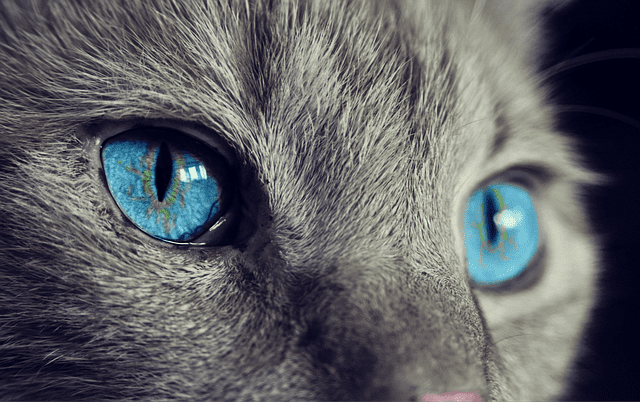
Are These Rare Domestic Cat Breeds Suitable for Families With Children or Other Pets?
When considering rare domestic cat breeds for your family, it’s important to focus on training methods and socialization techniques. Introducing pets and managing playtime require patience and consistency for a harmonious household dynamic. It’s crucial to train and socialize these cats properly to ensure they get along well with children and other pets. This will create a peaceful and loving environment for everyone involved. Remember, with the right approach and dedication, these rare cat breeds can make wonderful additions to your family.
What Are the Unique Personality Traits and Characteristics of These Rare Domestic Cat Breeds?
When exploring the unique personality traits and characteristics of rare domestic cat breeds, it’s important to consider their grooming needs, energy levels, and training requirements. Each breed has its own distinct qualities that set them apart. Understanding these traits can help cat owners provide the best care and companionship for their feline friends.
Conclusion
Now that you have discovered these rare domestic cat breeds, you may be feeling excited and eager to bring one into your home. These cats are truly unique and have fascinating backgrounds that make them stand out from the crowd.
Instead of settling for a typical cat, why not choose something extraordinary? Take the opportunity to find the perfect addition to your family and enjoy the companionship and joy they’ll bring into your life.
Cat Breeds
Discover Rare Domestic Cat Breeds With Our Guide
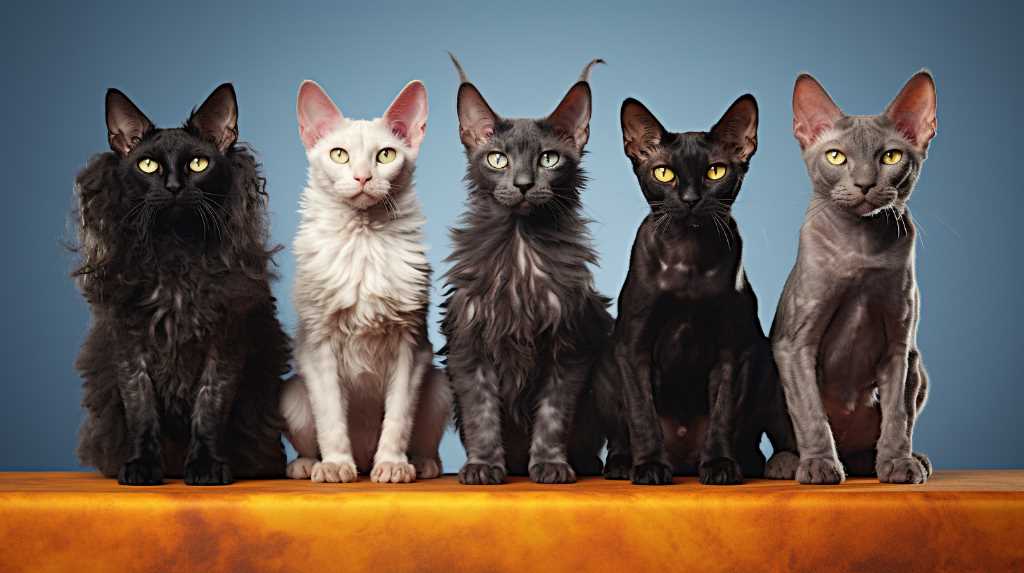
Discover Rare Domestic Cat Breeds With Our Guide
Explore the world of rare domestic cat breeds with our comprehensive guide.
You’ll discover unique felines like the Singapura, which holds the title for the smallest cat breed.
Another fascinating breed is the Korat, known for symbolizing good fortune.
Whether you’re a cat enthusiast or simply looking for a new addition to your family, our guide will introduce you to extraordinary breeds like the hairless wonder, Peterbald, and the curly coated LaPerm.
We’ll also shed light on lesser-known breeds such as the Turkish Van, which is famous for its remarkable swimming abilities.
Let us be your trusted companion as we navigate the realm of rare domestic cat breeds together, helping you find the perfect match for your home and heart.
Key Takeaways
Discover the fascinating world of rare domestic cat breeds, including the adorable Singapura and the curly-coated LaPerm. These unique feline companions are not only considered symbols of good luck but also bring joy and happiness to any home.
Each breed, from the hairless wonder of the Peterbald to the graceful Turkish Van, possesses its own special charm. These cats are known for their playful personalities and soothing purrs, making them the perfect addition to any family.

Experience the delight of these rare cat breeds and let them bring brightness to your days with their presence.
The Singapura: Smallest Cat Breed
Looking for a small cat breed? The Singapura might be the perfect choice for you. These cats are known for their small size, big eyes, and lively personalities. They’ve a compact and muscular body, large ears, and a unique ticked coat. Despite their small size, they’re energetic and love to play, making them a delightful addition to any household.
Taking care of a Singapura involves providing them with mental and physical stimulation. Interactive toys and regular playtime can help keep them happy and healthy. They also benefit from a nutritious diet to support their energy levels. Regular grooming is essential to keep their short coat in good condition.
Creating a safe and stimulating environment is crucial for these cats. With the right care and attention, the Singapura can bring joy and companionship to those looking for a small but spirited feline friend.
The Korat: A Symbol of Good Fortune
The Korat: A Symbol of Good Fortune
When it comes to rare domestic cat breeds, the Korat stands out as an intriguing choice due to its association with good luck. Originating from Thailand, the Korat is believed to bring blessings and prosperity to its owners. This unique breed is highly valued for its beautiful silver-blue coat and captivating green eyes.
Let’s explore some important aspects of the Korat:
Korat Origin and Significance: The Korat has a long and storied history that dates back to ancient Siam. In Thai culture, it was considered a symbol of good fortune and was often given as a cherished gift to bring luck and happiness to loved ones. This rich cultural significance adds to the allure and mystique of the Korat.
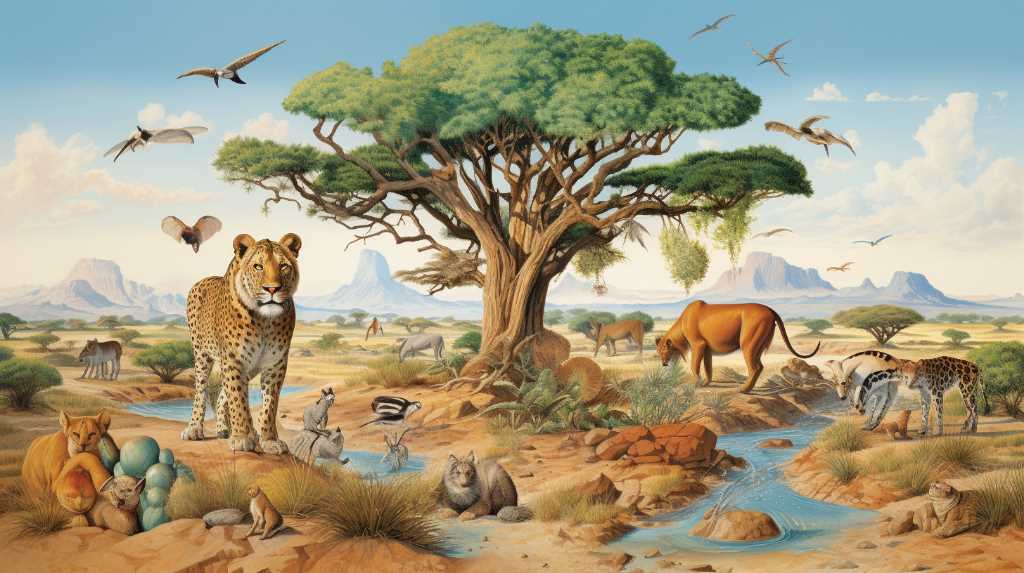
Korat Breeding Standards: Dedicated breeders adhere to strict standards to preserve the distinctive traits of the Korat. These include its heart-shaped head and double-layered coat. By maintaining these characteristics, each Korat maintains its unique appearance and lineage.
Korat Care: Known for their affectionate and loyal nature, Korats thrive on human companionship. Regular grooming is essential to keep their luxurious coat in top condition. They also enjoy interactive playtime, which helps keep them mentally and physically stimulated.
The association of the Korat with good fortune and its captivating beauty make it an appealing choice for cat enthusiasts who seek a meaningful and enchanting feline companion. As the saying goes, "A Korat by your side brings luck far and wide."
The Peterbald: A Hairless Wonder
The Peterbald, a rare domestic cat breed, is known for its unique hairless appearance, which sets it apart from the luxurious coat of the Korat. If you’re thinking about adopting a Peterbald and are worried about grooming, don’t worry! These cats require minimal maintenance because they don’t have fur. However, it’s important to protect their exposed skin.
Just like you have a skincare routine, these delightful felines need regular sunscreen application to shield them from harmful UV rays. They can also be prone to dry skin due to their lack of hair, so moisturizing with a pet-safe lotion is essential.
When it comes to allergies, the Peterbald is often considered hypoallergenic, making them a great choice for cat lovers who are sensitive to pet dander. Because they shed very little, there are fewer allergens in the environment. While no cat can be completely hypoallergenic, the Peterbald’s unique coat often causes fewer allergic reactions in people.
With the right skincare routine and attention to their grooming needs, the Peterbald can thrive in your care, bringing joy and companionship to your home.
The LaPerm: A Curly Coated Cat
Looking to add a special cat to your family? Consider the LaPerm, a charming breed known for its curly coat and affectionate nature. Here are some important points to keep in mind:

- Genetics behind: The LaPerm’s curly coat is a result of a genetic mutation that affects their hair follicles, giving them their unique wavy or curly fur. This genetic trait makes them stand out from other cats and adds an intriguing element to any home.
- Grooming tips: Despite their curly coats, LaPerms are surprisingly easy to care for. Their soft, curly fur rarely gets tangled or matted, so a gentle brushing once a week is usually sufficient to keep their coats in great condition. It’s also important to regularly trim their nails and take care of their dental hygiene for their overall well-being.
- Affectionate companions: LaPerms are known for their loving and affectionate nature. They enjoy being around their human companions and are often described as friendly, outgoing, and social cats. They make a great choice for families or individuals looking for a loyal and loving companion.
Transitioning to the next section about ‘the Turkish Van: The Swimming Cat,’ you’ll discover another fascinating and rare cat breed known for its unique swimming abilities.
The Turkish Van: The Swimming Cat
The Turkish Van Cat: A Remarkable Swimmer
Discover the exceptional swimming abilities of the Turkish Van cat breed with our informative guide. Unlike most domestic cats, the Turkish Van possesses a rare talent for swimming. These feline athletes have a natural affinity for water, making them exceptional swimmers. Their unique coat pattern, which is water-resistant and dries quickly, contributes to their love for swimming.
With a soft and silky semi-longhaired coat that resembles cashmere, the Turkish Van showcases a striking color pattern primarily on the head and tail, while the rest of the body is often white. This combination of water-loving behavior and stunning coat pattern truly sets the Turkish Van apart, making it a fascinating and special breed.
If you’re in search of a cat that enjoys water and boasts a one-of-a-kind coat, the Turkish Van could be the perfect fit for you. Not only are these cats beautiful, but they also possess an extraordinary talent for swimming, which adds a unique and delightful element to any cat-loving household.
Frequently Asked Questions
Are These Rare Domestic Cat Breeds Hypoallergenic?
Yes, some rare domestic cat breeds are hypoallergenic, but it varies. When considering hypoallergenic cats, it’s important to take into account their grooming requirements and shedding tendencies. Certain breeds may require less grooming and shed less, making them more suitable for individuals with allergies. Additionally, it’s worth considering their exercise needs and adaptability to ensure they will fit well into your lifestyle. It’s always a good idea to consult with a veterinarian or cat breed expert to determine which hypoallergenic breed may be the best fit for you.
What Are the Average Lifespans of These Rare Domestic Cat Breeds?
The rare domestic cat breeds have varying average lifespans. However, by providing proper care, grooming, exercise, and environmental enrichment, you can contribute to your feline companion’s long and healthy life. It’s important to understand their specific needs and be proactive in addressing common health issues. By doing so, you can ensure that your cat thrives for years to come. Remember, every cat is unique, and individual care and attention are crucial for their well-being.
Do These Cat Breeds Have Specific Dietary Requirements or Health Concerns?
When it comes to these unique domestic cat breeds, they have specific dietary needs and health concerns, as well as their own grooming and exercise requirements. It’s important to understand these factors to ensure their overall well-being.
Are These Cat Breeds Known for Certain Behavioral Traits or Personalities?
Certainly, these uncommon domestic cat breeds are recognized for their distinct personality traits and differences in temperament. Their origins and breed history also contribute to their unique behaviors, making them intriguing and delightful companions to have.

How Do These Rare Domestic Cat Breeds Interact With Children and Other Pets?
Rare domestic cat breeds have a great rapport with children, enjoying playful activities and building strong bonds. They can also get along well with other pets, but it’s important to introduce them early and socialize them properly with dogs and cats for successful interactions.
Conclusion
Explore the wonderful world of rare domestic cat breeds, including the adorable Singapura and the curly-coated LaPerm. These unique feline companions aren’t only a symbol of good luck but also bring joy and happiness to any home.
From the hairless wonder of the Peterbald to the graceful Turkish Van, each breed has its own special charm. These cats are known for their playful personalities and soothing purrs, making them the perfect addition to your family.
Experience the delight of these rare cat breeds and let them brighten your days with their presence.
Cat Breeds
What Are the Top Family-Friendly Domestic Cat Breeds?
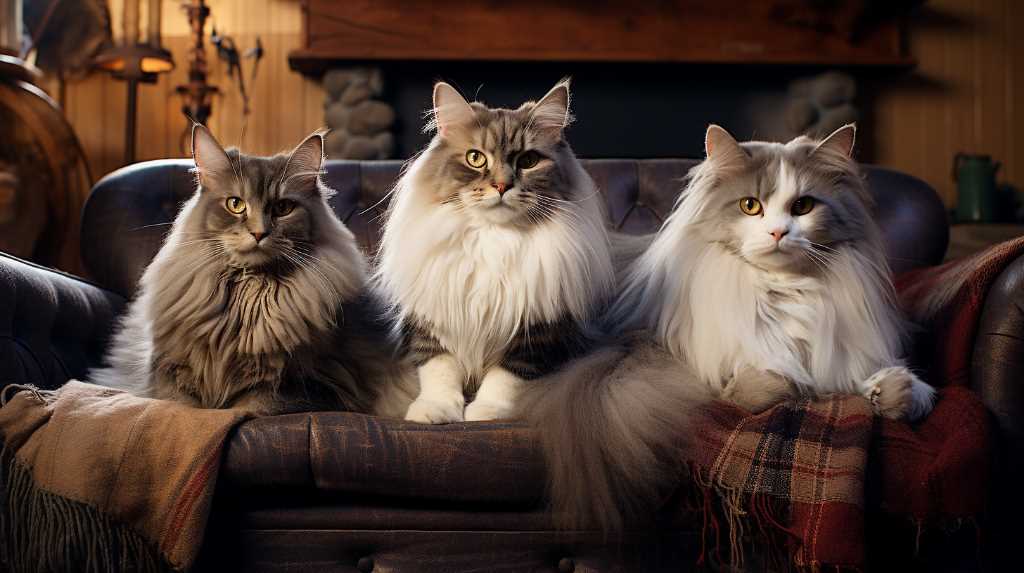
What Are the Top Family-Friendly Domestic Cat Breeds?
Curious about which cat breeds are best for families? Wondering if some cats are more suitable for kids? You’ve come to the right place! Finding the perfect cat companion for your family can be a rewarding experience. Understanding the characteristics of different cat breeds can help you make the best choice for your household.
In this guide, we’ll explore the top domestic cat breeds that are family-friendly and discuss their unique traits. Whether you’re interested in a gentle giant like the Maine Coon or an affectionate companion like the Ragdoll, we’ll help you navigate the process of choosing the right cat breed for your family.
Key Takeaways
Choosing the right cat breed for your family is an important decision. Understanding the characteristics and traits of different breeds can help you make an informed choice. There are several family-friendly cat breeds that you can consider. One such breed is the Maine Coon, known for its gentle nature and large size. Another option is the Ragdoll, a breed known for its affectionate and calm temperament. By selecting a cat breed that suits your family’s needs, you can ensure a harmonious and loving relationship for many years to come.
Understanding Domestic Cat Breeds
Understanding Different Domestic Cat Breeds
If you’ve ever been curious about how to distinguish between different domestic cat breeds, you can start by observing their physical characteristics and behaviors. By understanding cat behavior and breed-specific traits, you can easily identify and differentiate between various domestic cat breeds. Each breed has its own unique traits that have been carefully developed over time.
Domestic cat breeds have diverse origins, and their breed standards are based on specific physical attributes, such as coat length, color, and body shape, as well as behavioral characteristics. For instance, the Maine Coon is known for being sociable and friendly, while the Siamese is recognized for its vocal and affectionate personality. These breed-specific traits have been selectively bred for generations to create cats that fulfill specific roles within a household.
By familiarizing yourself with the history and breed standards of domestic cat breeds, you can gain a deeper appreciation for the distinctive qualities of each breed. By observing these traits and characteristics, you can easily identify and understand the differences between various domestic cat breeds, making it easier to choose the right cat for your family.
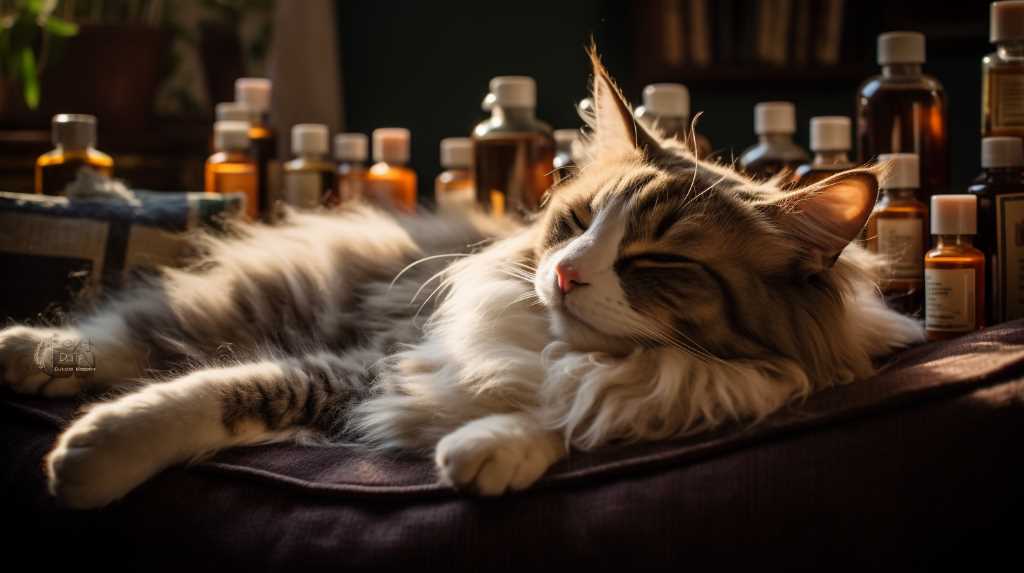
Quote: ‘Each domestic cat breed is unique, with its own set of physical and behavioral traits that make them truly special.’
Characteristics of Family-Friendly Cats
When considering which cat breeds are well-suited for households with children and other pets, it’s important to look at specific traits and behaviors. One key characteristic of family-friendly cats is their child-friendly behavior. These cats have a gentle and patient nature, making them great companions for families with young children. They’re tolerant of being handled and are less likely to scratch or bite when provoked, creating a safer environment for kids.
In addition to their child-friendly behavior, family-friendly cats often require low maintenance care. This means they’re generally easy to care for and can adapt well to the busy schedules of families. They may have a laid-back demeanor and enjoy lounging around the house, needing minimal grooming and attention compared to more high-maintenance breeds. This makes them a great choice for families looking for a pet that can easily fit into their lifestyle without requiring excessive time and effort.
Understanding these characteristics can help families make informed decisions when choosing a cat breed that will harmoniously fit into their household.
The Maine Coon: Gentle Giants
The Maine Coon cat breed is beloved for its large size and friendly nature, making it a popular choice for families in search of an affectionate feline companion. These cats truly live up to their reputation as gentle giants, as they’re among the largest domesticated breeds. Male Maine Coons can weigh between 13-18 pounds, while females typically range from 8-12 pounds, with some individuals weighing even more. However, it’s not just their size that sets them apart.
Maine Coons are known for their intelligence, gentle temperament, and adaptability, making them excellent companions for both families and individuals. Their friendly disposition and sociable nature make them great with children and other pets. They thrive on human interaction and enjoy being part of family activities, making them well-suited for indoor living.
In addition to their impressive size, Maine Coons have a majestic appearance thanks to their thick, water-repellent coat and tufted ears. This adds to their overall charm and appeal.
If you’re seeking a loving and sociable feline companion, the Maine Coon is an excellent choice. Their gentle and friendly nature, coupled with their impressive size, make them a perfect addition to any household.

The Ragdoll: Affectionate Companions
Consider adding a Ragdoll cat to your family for a loving and affectionate companion. Ragdolls are known for their gentle and sociable nature, making them great for families. Here are some important things to know about caring for a Ragdoll:
- Temperament: Ragdolls have a reputation for being gentle and affectionate. They’re often compared to dogs because they like to follow their human family members around and greet them at the door. Their calm and easygoing demeanor makes them a good fit for families with kids and other pets.
- Care Requirements: Ragdolls have semi-long, silky fur that needs regular grooming to prevent matting. Brushing them a few times a week can help reduce shedding and maintain a healthy coat. They’re also prone to dental issues, so it’s important to take care of their teeth. Due to their trusting nature, Ragdolls should be kept indoors to keep them safe.
- Social Needs: Ragdolls thrive on companionship and shouldn’t be left alone for long periods. They enjoy interactive play and human interaction, which makes them an ideal choice for families looking for a loving and devoted feline companion.
Choosing the Right Cat Breed for Your Family
Choosing the Right Cat Breed for Your Family
Finding the perfect cat breed for your family involves considering the specific needs and temperament of each breed, ensuring a harmonious fit with your lifestyle. It’s important to think about how the breed’s characteristics align with your family’s activity level and living situation.
When selecting a breed, it’s crucial to consider their temperament. For families with children, look for breeds known for being gentle and tolerant, such as Ragdolls or Maine Coons. If you have a busy schedule, consider low-maintenance breeds like the British Shorthair or Russian Blue, which are known for their independent nature. On the other hand, if you’re looking for an active and playful cat, breeds like the Abyssinian or Siamese could be a great match.
It’s also important to take into account any allergies within the family, as certain breeds are more hypoallergenic than others. Additionally, consider the available space in your home; some breeds, like the Bengal or the Savannah, are more energetic and require ample room to roam and play.
Frequently Asked Questions
What Are the Common Health Issues Associated With Family-Friendly Cat Breeds?
When considering cat breeds that are suitable for families, it’s important to be aware of their genetic predispositions and the common health issues they may face. Understanding their dietary needs and exercise requirements is also crucial for ensuring their overall well-being. By taking these factors into consideration, you can provide the best care for your family-friendly cat and help them live a healthy and happy life.
Are There Any Specific Grooming Requirements for These Domestic Cat Breeds?
Grooming is an important aspect of caring for domestic cat breeds. Regular brushing is necessary to keep their coats well-maintained and to control shedding. For short-haired breeds, a weekly brushing session is sufficient, while long-haired breeds require daily grooming to prevent mats and tangles. Bathing should be done as needed to keep their fur clean. By dedicating time to grooming, you can ensure that your cat’s coat stays healthy and beautiful.
How Do Family-Friendly Cat Breeds Typically Interact With Children and Other Pets?
How do cat breeds that are good with families typically interact with children and other pets? When it comes to training and socialization, the key is early exposure and positive reinforcement to address any potential challenges. It’s important to introduce these cat breeds to children and other pets at a young age, allowing them to become comfortable and familiar with each other. This helps to promote a positive and harmonious relationship within the family. Positive reinforcement, such as treats and praise, can be used to encourage good behavior and discourage any negative interactions. By following these best practices, families can create a loving and inclusive environment for both their children and their pets.
What Are Some Common Misconceptions About Family-Friendly Cat Breeds?
Common misconceptions about family-friendly cat breeds often arise from making generalizations. It’s important to recognize that each cat has unique behavior and personality traits. Cats can interact differently with children and other pets, so it’s essential to evaluate each cat individually. By understanding the specific characteristics of a cat, you can make an informed decision about whether it will be a good fit for your family.

Are There Any Unique Personality Traits or Behaviors That Family-Friendly Cat Breeds Are Known For?
When considering cat breeds that are suitable for families, it’s important to understand their unique personality traits, social behaviors, and ability to adapt. These cats often display affectionate, gentle, and playful characteristics, which make them perfect companions for family life. They enjoy interacting with their human family members and are known for their loving nature. Additionally, they are typically patient and tolerant, making them well-suited for households with children. These family-friendly cat breeds provide joy, companionship, and entertainment for the whole family.
Conclusion
When it comes to choosing a cat breed that’s suitable for families, it’s important to understand the characteristics and traits of different breeds.
There are many options available to fit your family’s needs, such as the gentle giant Maine Coon or the affectionate Ragdoll.
By carefully selecting the right cat breed for your family, you can ensure a harmonious and loving relationship for years to come.
-

 cats8 months ago
cats8 months agoHow to Get Your Cats to Stop… Everything You Hate: Every No Needs a Yes!
-

 All Animals1 year ago
All Animals1 year agoALL about Lagomorphs Explained!
-

 All Animals11 months ago
All Animals11 months agoExplore the Wilderness: ALL about Carnivores Unleashed!
-

 Animals1 year ago
Animals1 year agoThe Wonders: ALL About Artiodactyls
-

 Cat Breeds7 months ago
Cat Breeds7 months agoWhat Are Some Rare Domestic Cat Breeds?
-

 Cat Breeds7 months ago
Cat Breeds7 months agoWhat Are the Top Family-Friendly Domestic Cat Breeds?
-

 Cat Breeds7 months ago
Cat Breeds7 months agoTop Family-Friendly Domestic Cat Breeds
-

 Cat Breeds7 months ago
Cat Breeds7 months agoDiscover Rare Domestic Cat Breeds With Our Guide
